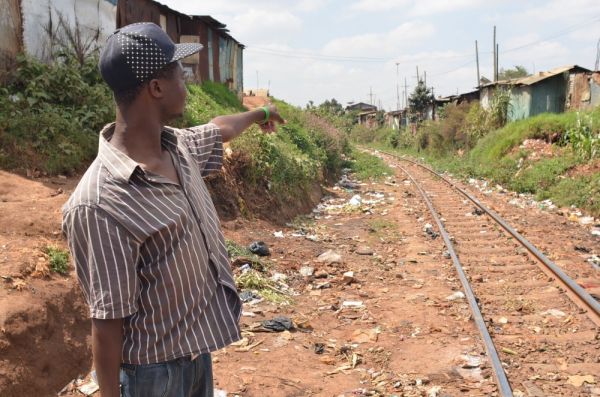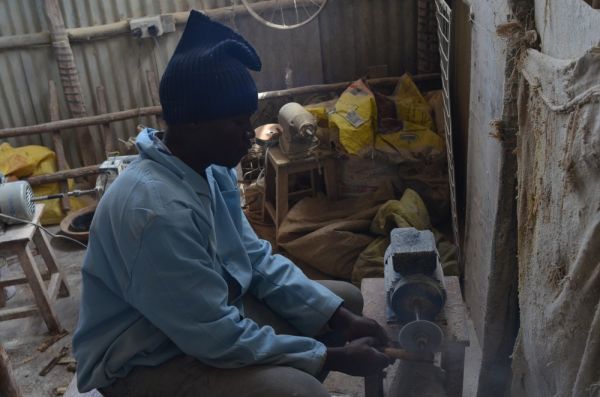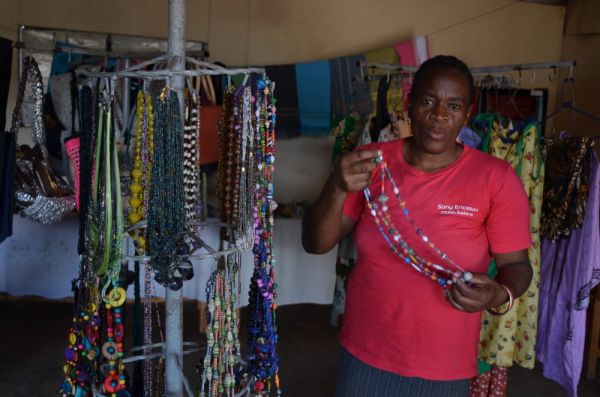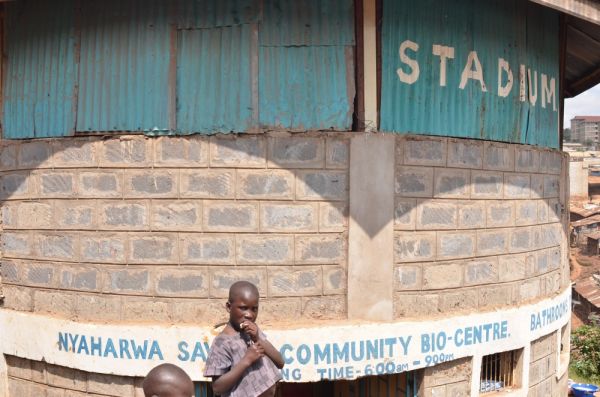Is Slum Tourism Wrong? Kibera’s Residents Voice Their Opinions

One of Samuel’s tour guides points down the track toward Mombasa.
During the height of Kenya’s July-August tourist season, tens of thousands of travelers from around the world come here for wildlife safaris and pristine Indian Ocean beaches.
But in Nairobi, another form of tourism is gaining popularity. Every day, a few small companies take camera-toting foreigners on guided tours of Kibera, one of Africa’s largest slums, to give the wealthy outsiders a glimpse of life in an informal settlement. With a local guide, they make their way through Kibera’s narrow dirt streets, looking at the metal shacks and the people who inhabit them.
Kibera’s “slum tours” aren’t an entirely new concept, and like the township tours in South Africa and favela tours in Brazil, slum tours in Nairobi are controversial. Supporters argue they bring money to locals and show tourists a side of Kenya not found in typical travel itineraries; opponents deride the practice as degrading and exploitative.
To see for myself, I took a slum tour in Kibera last week, and then went back to ask residents living along the route how they felt about tourists in their neighborhood.

A craftsman saws a bone that will be made into jewelry to sell to tourists.
Finding a tour was easy — a quick Google search popped up several. “The friendliest slum in the world,” advertised one company. “Raw” and “eye-opening,” promised another. All of them assured the potential slum tourist that their money would benefit the community. I booked a four-hour walking tour for 2,500 shillings ($30 USD) with the first company that responded to my call.
The next day I arrived at a café near Kibera and met “Samuel,” the tour company’s enthusiastic owner. Samuel, 25, wore a crisp baseball cap, a shiny blue jacket and bright sneakers. It was clear that business was good. Smiling wide, he told me he’s lived in Kibera his whole life, and started the tour company about five years ago with the help of a Dutch aid worker. In the high season, he runs one or two tours a day for tourists, businesses, students and aid workers. Half a dozen guide work for his company, all Kibera residents.
There was only one other tourist in the group, an Australian college student, and we began our tour with a walk through a vast open-air market where people sold everything from dried fish to secondhand blue jeans. Samuel briefly explained Kibera’s history, and apart from his claim that the settlement is home to between “800,000 and 1 million” people — a widely cited but inaccurate statistic — he knew his facts well.
Then we visited some local organizations, including a women’s HIV/AIDS support group, a curio workshop and a preschool. At each stop, we talked to the people working there and were offered beaded necklaces and other crafts for sale. We also stopped at the train tracks (“that way to Mombasa, and that way to Uganda,” our guide pointed out) and a public toilet facility, notable because it was the only one in the area and converted human waste to biogas for electricity.
Samuel said we could take pictures as long as we got permission first. Another tour guide later told to me that community members disliked picture-taking when the tour company first opened, but eventually accepted it after Samuel explained that tourists had no ulterior motives.

Evelynne Shiangala shows off beaded necklaces for sale to tourists.
When I returned the next day to ask residents how they felt about the slum tourism, however, almost everyone I spoke to said they were uncomfortable with tourists taking pictures of them. Some worried the photos would be sold abroad for profit without compensating locals (and indeed, a quick search of stock photo websites, on which anyone can sell their snapshots for money, turns up pictures of Kibera). Others feared photos would be used to scam would-be donors into giving money to fake aid programs. To Odette Ndede, an actress in a Kibera community theater, just the idea of tourists photographing slum residents was offensive. “It’s like you are equating people to animals,” she said.
It’s not uncommon for slum tours to incorporate volunteer opportunities, and the Australian student brought coloring books and markers to give to the preschool. She stayed there to play with the children for the afternoon, while I continued with a different guide.
For those who have never confronted poverty up close, a Kibera tour could be a moving experience. In an online review, one tourist wrote, “You realize how fortunate you really are.” Another rejected the popular images of destitute African slums. “Don’t think of it as a slum,” she wrote, “but as a neighbourhood.” My guide said she hopes her clients take away one image from their visit: “[You] see people are just smiling despite the fact that they have all those problems.”
My tour ended in a small room with a few couches and a bed, a typical Kibera home, I was told. On the coffee table was a tip jar, t-shirts for sale and laminated brochures for resorts on the Kenyan coast.

A public toilet facility visited during a slum tour.
As the guide wrote out my receipt, she told me she earns 300 shillings ($3.50) for one tour and 500 if she works two in one day, which could take up to eight hours. To boost her income, she said she holds a second job at a nearby internet café. I asked about the other 2,200 shillings ($25.88) I had paid. She said the company pays the rent and electricity for the home we were in, and each of the organizations I visited receives a few hundred shillings.
The next day, though, some of those organizations told me the opposite. At the curio workshop, where employees hunched over drills and saws, turning cow and camel bones into beads, the group’s secretary said they actually pay the tour company a percentage of their profits. If they sell 1,000 shillings ($11.75) of merchandise to a tourist group, the tour guides get 200.
It seemed exploitive to me, but the secretary was fine with the arrangement. He had helped negotiate the agreement with Samuel, and appreciated receiving foreign buyers to a company that had previously only supplied to local artisans.
Indeed, most people I spoke to along the route were positive about slum tourists. To Frederick Otieno, 28, who sells water and washes cars with a youth group, tourists mean potential donors. “When muzungu (white people) go to see animals, it is mostly the government that benefits,” he said. “We’d rather prefer that the muzungu comes to see us because they [might] come and fund a school here.” Otieno’s hope isn’t so far-fetched. In some blocks of this Kibera neighborhood, almost every other storefront is a local or foreign NGO, and volunteers and interns flock to the area every summer.
Still, perhaps a hundred thousand people live in Kibera, and tours like Samuel’s bring in only a few tourists a day in the high season. So Evelynne Shiangala, who heads an HIV/AIDS support group that sells beaded necklaces and colorful cloth wraps to tourists, was more measured in her expectations of slum tourism. “Sometimes it becomes a profit for the people in Kibera and sometimes not,” she said. “Not all the people will benefit from the tourists.”
Photos by Jason Patinkin









